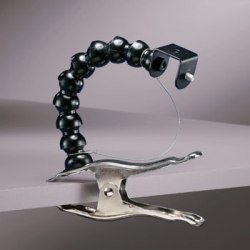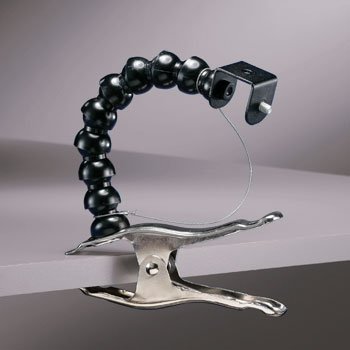CCUFM-C-K MOUNT CLIP UNIVERSAL FLEX
SKU: CCUFM-C-K
SKU: CCUFM-C-KA universal joint, (universal coupling, U-joint, Cardan joint, Hardy-Spicer joint, or Hooke's joint) is a joint or coupling in a rigid rod that allows the rod to 'bend' in any direction, and is commonly used in shafts that transmit rotary motion. It consists of a pair of hinges located close together, oriented at 90° to each other, connected by a cross shaft. The mechanism was later described in Technica curiosa sive mirabilia artis (1664) by Gaspar Schott, who mistakenly claimed that it was aconstant-velocity joint Shortly afterwards, between 1667 and 1675, Robert Hooke analysed the joint and found that its speed of rotation was nonuniform, but that this property could be used to track the motion of the shadow on the face of a sundial.[3] In fact, the component of the equation of time which accounts for the tilt of the equatorial plane relative to the ecliptic is entirely analogous to the mathematical description of the universal joint. The universal joint is not aconstant-velocity joint. The term universal flex was used in the 18th century[9] and was in common use in the 19th century. Edmund Morewood's 1844 patent for a metal coating machine called for a universal joint, by that name, to accommodate small alignment errors between the engine and rolling mill shafts.[12] Lphriam Shay's locomotive patent of 1881, for example, used double universal joints in the locomotive's drive shaft.[13] Charles Amidon used a much smaller universal joint in his bit-brace patented 1884.Beauchamp Tower's spherical, rotary, high speed steam engine used an adaptation of the universal joint circa 1885.
- Shipping info
We deliver worldwide
- Payment methods
- Return Policy
We accept returns
- Customer Reviews
Check out our customer Reviews
A universal joint, (universal coupling, U-joint, Cardan joint, Hardy-Spicer joint, or Hooke's joint) is a joint or coupling in a rigid rod that allows the rod to 'bend' in any direction, and is commonly used in shafts that transmit rotary motion. It consists of a pair of hinges located close together, oriented at 90° to each other, connected by a cross shaft. The mechanism was later described in Technica curiosa sive mirabilia artis (1664) by Gaspar Schott, who mistakenly claimed that it was aconstant-velocity joint Shortly afterwards, between 1667 and 1675, Robert Hooke analysed the joint and found that its speed of rotation was nonuniform, but that this property could be used to track the motion of the shadow on the face of a sundial.[3] In fact, the component of the equation of time which accounts for the tilt of the equatorial plane relative to the ecliptic is entirely analogous to the mathematical description of the universal joint. The universal joint is not aconstant-velocity joint. The term universal flex was used in the 18th century[9] and was in common use in the 19th century. Edmund Morewood's 1844 patent for a metal coating machine called for a universal joint, by that name, to accommodate small alignment errors between the engine and rolling mill shafts.[12] Lphriam Shay's locomotive patent of 1881, for example, used double universal joints in the locomotive's drive shaft.[13] Charles Amidon used a much smaller universal joint in his bit-brace patented 1884.Beauchamp Tower's spherical, rotary, high speed steam engine used an adaptation of the universal joint circa 1885.
















